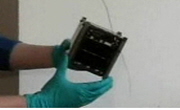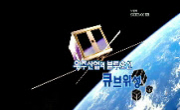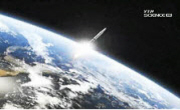본 논문에서 우리는 여러 지상-우주 레이저 어플리케이션의 통합 인프라를 제공하는 ‘충남대학교 레이저통합 버스’(Chungnam National University Laser Unity Bus, CLUB) 큐브위성의 컨셉을 소개한다. ...
http://chineseinput.net/에서 pinyin(병음)방식으로 중국어를 변환할 수 있습니다.
변환된 중국어를 복사하여 사용하시면 됩니다.
- 中文 을 입력하시려면 zhongwen을 입력하시고 space를누르시면됩니다.
- 北京 을 입력하시려면 beijing을 입력하시고 space를 누르시면 됩니다.

지상-우주 레이저 연구를 위한 큐브위성 CLUB(CNU Laser Unity Bus)의 임무 중심 개념설계 = Mission-Oriented Conceptional Design of the Cube Satellite CNU Laser Unity Bus (CLUB) for Ground-Space Laser Research
한글로보기https://www.riss.kr/link?id=A108995043
-
저자
Seok-Min Song (Chungnam National University) ; Ho Sub Song (Korea Astronomy and Space Science Institute) ; Chae-Ryeong Kim (Department of Astronomy and Space Science, Chungnam National University)
- 발행기관
- 학술지명
- 권호사항
-
발행연도
2024
-
작성언어
Korean
- 주제어
-
등재정보
KCI등재후보
-
자료형태
학술저널
-
수록면
48-61(14쪽)
- DOI식별코드
- 제공처
-
0
상세조회 -
0
다운로드
부가정보
국문 초록 (Abstract)
본 논문에서 우리는 여러 지상-우주 레이저 어플리케이션의 통합 인프라를 제공하는 ‘충남대학교 레이저통합 버스’(Chungnam National University Laser Unity Bus, CLUB) 큐브위성의 컨셉을 소개한다. 오늘날뉴스페이스 시대에 들어 우주공간의 활용이 급속도로 확대되면서 전파의 한계가 드러나기 시작했고, 수행하는 임무들이 다양해짐에 따라 대체 가능한 수단인 레이저가 주목 받고 있다. 레이저는 지상과 우주공간사이에서 인공위성 레이저 거리측정(satellite laser ranging, SLR), 레이저 무기, 레이저 통신 등 다양한 응용분야에 이용할 수 있다. 하지만 지상과 우주공간 사이에서 사용되는 레이저는 지구 대기의 상당한 영향을 받게 된다. 이에 레이저 전파에 영향을 미치는 대기효과에 대한 이해가 필수적으로 요구된다. 특히 레이저의 전파 방향을 굴절시키고 파면을 왜곡시키는 대기 난류는 지상과 가까워질수록 강해지기 때문에 하향링크에 비해 상향링크에 더 큰 영향을 미친다. 하향링크의 경우 지상에서 검출할 수 있기 때문에 검증이용이한 반면, 상향링크의 경우 우주공간에서 검출해야 하는 어려움 때문에 검증에 어려움이 있다. 이에 우리는 상향링크의 레이저 전파에 대한 이해를 돕고 검증하기 위한 큐브위성의 아이디어를 제안한다. 또한체계적인 큐브위성 개발을 위해 시스템공학의 진행단계에 따라 CLUB 큐브위성의 임무설계를 중심으로요구사항을 분석하여 개념설계를 진행한 결과를 제시한다.
다국어 초록 (Multilingual Abstract)
In this paper, we introduce the concept of the cube satellite Chungnam National University Laser Unity Bus (CLUB), which can provide an integrated infrastructure for various ground-space laser applications. With the advent of the new space era, the ra...
In this paper, we introduce the concept of the cube satellite Chungnam National University Laser Unity Bus (CLUB), which can provide an integrated infrastructure for various ground-space laser applications. With the advent of the new space era, the rapid expansion of space utilization has begun to reveal the limitations of conventional radio frequencies. As space missions diversify, lasers are garnering attention as a viable alternative. Between ground and space, lasers are applied in various fields including satellite laser ranging (SLR), laser weapons, and laser communication. However, laser used between the ground and space are significantly influenced by the Earth’s atmosphere. Consequently, understanding the atmospheric effects on laser propagation is crucial. In particular, atmospheric turbulence, which refracts and distorts laser beams, intensifies closer to the Earth’s surface, exerting a greater impact on the uplink than on the downlink. While downlink verification is facilitated by ground detection, verifying the uplink poses challenges due to the necessity of space-based detection. In response to these challenges, we propose the idea of cube satellite as a means to enhance understanding and verification of laser propagation in the uplink. Additionally, we present the results of conceptual design by analyzing requirements, focusing on mission design of the CLUB cube satellite, following the stages of systems engineering for systematic cube satellite development.
동일학술지(권/호) 다른 논문
-
- 한국우주과학회
- Taewoo Kim
- 2024
- KCI등재후보
-
- 한국우주과학회
- Ki-Pyoung Sung
- 2024
- KCI등재후보
-
초소형위성 자세제어를 통한 우주물체 충돌회피 효용성 분석
- 한국우주과학회
- Jae-Dong Seong
- 2024
- KCI등재후보
-
Control Moment Gyroscope Torque Measurements Using a Kistler Table for Microsatellite Applications
- 한국우주과학회
- Goo-Hwan Shin
- 2024
- KCI등재후보




 ScienceON
ScienceON





